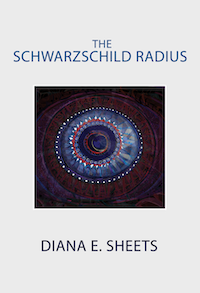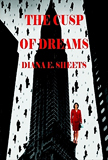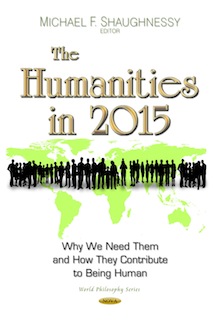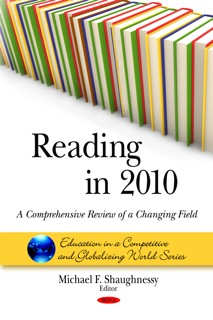Solzhenitsyn, Truth, & the Dismal Fate of Literature in the 21st Century, Part 1
Copyright © 2009 by Diana E. Sheets
In the West they say the (Russian) novel is dead . . . but . . . we should publish novels—such novels as would make them blink as if from a brilliant light and then the “New Novel” would die down and then the “neo-avant-gardists” would disappear. (Solzhenitsyn speaking at the meeting of the Union of Writers in 1967, Christopher Moody, Solzhenitsyn, The Modern Writers’ Series, Barnes & Noble Books, 1976, 3).
One of the most important writers of the twentieth century was Aleksandr Solzhenitsyn (1918-2008). His fiction and nonfiction were guided by the moral imperative to bear witness to what he believed to be the two greatest calamities of that century: the Russian Revolution and the attendant horrors of Soviet totalitarianism manifested in the Gulag (1918-1987).
Part I of this essay will consider the implications of three works by Solzhenitsyn that present the story of the Gulag: the novella One Day in the Life of Ivan Denisovich (1962); the novel The First Circle (1968); and the three-volume nonfiction chronicle of the human carnage wrought by Soviet totalitarianism, The Gulag Archipelago (1973-78). Part II will examine Solzhenitsyn’s perspective on autobiography, storytelling, truth, and moral agency as revealed in, among other sources, his memoir The Oak and the Calf (1975), his Nobel Lecture (1970), and his Harvard Commencement Address (1978). It will also consider the significance of his epic four “knot” (volume) historical fiction, The Red Wheel, published between 1971 and 1991. Part III will address the dismal fate of fiction in the twenty-first century in light of Solzhenitsyn’s storytelling.
Solzhenitsyn’s novella One Day in the Life of Ivan Denisovich presents the ordinary day in the life of a zek (prisoner) sentenced to a “special” (political) prison in
One Day was derived largely from Solzhenitsyn’s experiences at the Ekibastuz labor camp though mediated through the perspective of an ordinary worker. Several of the principal characters were based on individuals Solzhenitsyn knew at the camp. The naval commander Buinovsky, for example, was modeled after Captain Boris Burkovsky. Tsezar Markovich, the script writer, was based on Lev Grossman. The early life of brigade leader Tiurin was shaped by the reminiscences of Nikolai K who was later interviewed in The Gulag Archipelago (Michael Scammell, Solzhenitsyn, Hutchinson & Co Ltd., 1985, 384-5).
One Day, in effect, pays homage to Dostoevsky’s Notes from the House of the Dead (1862), a novel derived from the author’s experience in a Siberian penal colony while applying Tolstoy’s prescription that fiction might deal with either centuries of history or, as in the case of Solzhenitsyn’s novella, a single day. Inspired by the great nineteenth-century Russian realists—Tolstoy, Turgenev, and Goncharov—Solzhenitsyn’s fiction infuses moral agency and historical commentary (Moody, 34, 36-7). In writing realistic fiction charged with didactic purpose rather than the aesthetic tenets advanced by the avant-garde Symbolists and Futurists, Solzhenitsyn’s stories nominally adhere to Soviet Realism (Fifty Years of Russian Prose: From Pasternak to Solzhenitsyn, Vol. 1, Edited by Krystyna Pomorska, The MIT Press, 1971, vii) while simultaneously upending social norms to present devastating truths about Stalin’s totalitarian regime. The impact of One Day, as Edward E. Ericson, Jr. and Alexis Klimoff noted, was “taboo-shattering” (The Soul and Barbed Wire, ISI Books, 2008, xi).
At the Twenty-second Party Congress of the Communist Party (1961), Khrushchev continued the de-Stalinzation initiates introduced in his “secret speech” in 1956 and publicly affirmed at the Twenty-first Congress in 1959. Aleksandr Tvardovsky, editor of the Soviet’s leading literary magazine Novy Mir, made a plea at the Twenty-second Congress for writers to submit stories “showing the labours and ordeals of our people in a manner that is totally truthful and faithful to life . . . .” The impact on Solzhenitsyn was profound. “I couldn’t remember when I had read anything as interesting as the speeches at the Twenty-second Congress. In my little room in a decaying wooden house . . . I read and reread those speeches, and the walls of my secret world swayed . . . , wavered, expanded, and carried me queasily with them” (Scammell, 407).
Emboldened, Solzhenitsyn submitted One Day to Novy Mir. Today, it is difficult to realize the extraordinary impact of this story. It dared to present the terrible circumstances of the labor camps in a literary manner that was both emotionally riveting yet artfully restrained. Tvardovsky bypassed the usual bureaucratic channels to make the case for the novella directly to Khrushchev. With the Premier’s consent, it was published by Novy Mir in 1962. One Day gave voice to the unspeakable. By means of an omniscient narrator it exposed the injustices of camps while softening the explosive impact of the story by focusing on an almost hopeful day in the life of an ordinary “peasant.”
Solzhenitsyn submitted The First Circle to Novy Mir for publication in 1964. By then, however, the political climate had shifted from reform to retrenchment. When Tvardovsky broached Khruschev’s cultural advisor V. S. Lebedev about The First Circle, he was warned, “Keep this novel well hidden. Don’t let anybody see it.” Adding, “If only you knew who has now taken a dislike to Ivan Denisovich and regrets that it was ever published” (Scammell, 506). Two years after the Cuban Missile Crisis, Khrushchev resigned as Premier (October 15, 1964). Solzhenitsyn’s window of opportunity was over.
The First Circle is a story closely modeled after Solzhenitsyn’s experience in the Marfino sharashka, a scientific institute located at the edge of
As with so many of Solzhenitsyn’s stories, The First Circle is, above all, a novel of ideas suffused with ethical underpinnings. It was named for Dante’s The Divine Comedy in which many of the greatest thinkers—pagans all—are consigned to the first circle of hell, a relatively benign inferno (Harper & Row, Publishers, 1968, 8-9). In Solzhenitsyn’s novel several characters are faced with a moral quandary: should they enjoy the relative comforts afforded by life in the sharashka that abets the totalitarian regime or should they resist, facing deportation to a hard labor camp and, possibly, death? Solzhenitsyn’s position is clear, “There is nothing relative about justice, as there is nothing relative about conscience. Indeed justice is conscience, not a personal conscience but the conscience of the whole of humanity. Those who clearly recognize the voice of their own conscience usually recognize also the voice of justice” (Moody, 119).
The First Circle was a politically explosive novel. It was another story of the Gulag—a painful reminder of Soviet failure—that explored the beliefs of some of the brightest political prisoners and, by implication, the influences driving their resistance to the regime. Even before submitting the novel to Tvardovsky, Solzhenitsyn took the precaution of editing its most controversial passages, thereby winnowing the novel down from ninety-six to eighty-seven chapters. This revision, however, presented difficulties. Not only did self-censorship muzzle the narrative, it transformed the story (The Solzhenitsyn Reader: New and Essential Writings, 1947-2005, Edward E. Ericson, Jr., and Daniel F. Mahoney ISI Books, 2006, 101-4).
The unedited version opens with a Soviet diplomat, Innokentii Volodin, calling the American Embassy from a payphone to warn of an impending effort to steal
The edited version of The First Circle features the telephone-booth scene. However, Volodin calls to warn a doctor against supplying contraband medicine to his French colleagues (Scammell, 499). By changing the inciting event, Solzhenitsyn trivializes the story. Instead of the weighty issue of nuclear containment, the reader is presented with what amounts to, essentially, a petty theft driven by conscience. Consequently, the moral impetus of the novel is undermined. The story modification subverts the motivation of Volodin, as well as the integrity of Sologdin and Nerzhin. In altering the plot, moral agency is diminished from heroic resistance to a totalitarian regime to a refusal to act as witless cogs in the machinery of the Soviet bureaucracy. Culpable, yes, but hardly a crime likely to consign these men to eternal damnation. Consequently, the edited version of The First Circle never rises to the level of the suspense thriller it was meant to be. Thankfully, the unedited version, revised and authorized by Solzhenitsyn and recently translated by Harry T. Willetts, will be published in English by Harper Perennial later this year (http://rbth.ru/articles/2008/09/01/310808_circle.html).
The First Circle, as with Solzhenitsyn’s later novels and The Gulag Archipelago, is a “polyphonic” story shaped by the plurality of consciousness and simultaneity of plots that rejects a defining narrative while, nonetheless, eschewing the social relativism later embraced by postmodernists. Solzhenitsyn, therefore, follows in the steps of Dostoevsky. For as Mikhail Bakhtin illustrates in Problems of Dostoyevsky’s Poetics (Theory & History of Literature, University of Minnesota Press, April, 1984), Dostoevsky’s fiction does not present a single narrative interpreted from a variety of perspectives by his characters. Rather, his novels of ideas contain simultaneous narratives peaking at different junctures, reflecting the social complexity of the world in which we live. This literary approach is best demonstrated in The Brothers Karamazov (http://en.wikipedia.org/wiki/Polyphony, click on “Polyphony, [literature]”). The intent of Dostoyevsky and Solzhenitsyn is to present narratives featuring a polyphonic chorus that, in effect, mimics a symphonic worldview, thereby providing the reader with a panoramic depiction of society. For some readers this makes Solzhenitsyn’s stories “too big,” “too complicated,” and “too real.” But these polyphonic voices steeped in realism and grounded in history give Solzhenitsyn’s work its moral and social foundation lending substance and authenticity to his stories.
As with One Day, many of the characters in The First Circle are composites of prisoners with whom Solzhenitsyn was acquainted. The character Gleb Nerzhin represents the author’s alter ego. Lev Rubin is Lev Kopelev, the zek who delivered One Day to Novy Mir on Solzhenitsyn’s behalf to have the story considered for publication. The character Dmitri Sologdin is Dimitri Panin. He is less sympathetically portrayed in the 96-chapter authorized edition, a consequence of his estrangement with Solzhenitsyn following the book’s initial publication in 1968 (Richard Hallett, “Beneath A Closed Visor: Dimitry Panin and the Two Faces of Sologdin in Solzhenitsyn’s ‘The First Circle,’” The Modern Language Review, Vol. 78, No. 2, April, 1983, 365-74). In both editions Nerzhin refuses to work on research associated with identifying the diplomat, thus ensuring that he will be sent to a labor camp in
The First Circle is a novel of ideas with moral agency at its core. In the sharashka characters argue about politics, intellectual issues, and religion. They consider the degree to which they will cooperate with authorities and worry about the impact their research may have on the lives of others. Given the novel’s controversial content, Solzhenitsyn insisted on retrieving copies of his manuscript from Novy Mir following Khrushchev’s ouster from office. Nevertheless, three of those four copies were later confiscated by the KGB (Scammell, 524-6).
With the political climate worsening, Solzhenitsyn worked to complete Cancer Ward in hopes that it would be suitable for publication. The novel presents the story of a group of cancer patients living in
The critical success of these novels in the West, coupled with praise for Solzhenitsyn’s resistance to Soviet authorities, propelled him to fame. He was awarded the Nobel Prize for fiction in 1970. A year later he was poisoned by means of a sharp instrument purportedly laced with Ricin. That same year he smuggled a copy of August 1914 to the West, which was quickly published. This historical novel, the first of four volumes of The Red Wheel, interwove history and fiction, featuring both fictional characters and historical leaders in what was then Christian Russia, which Solzhenitsyn celebrated at the expense of the [future] Communist regime. In 1973, the Soviet authorities confiscated a copy of Solzhenitsyn’s The Gulag Archipelago, a copy of which had been entrusted to Elizaveta Voronyanskaya. After being tortured, she relinquished her copy before later committing suicide or, as Solzhenitsyn contended, was murdered. With microfilmed copies of The Gulag Archipelago already safely in Western hands, the presses began printing. The first volume, published in Russian, was available that same year. Shortly thereafter, the three volumes, seven sections—all eighteen hundred pages of The Gulag Archipelago—were published in Russian, English, and many other languages throughout the world. No historical document could have been more devastating to the Soviet regime. Solzhenitsyn was expelled in 1974 (The Soul and Barbed Wire, 27-30). His second wife, Natalia Svetlova, and their children soon followed. They eventually settled in the
In today’s post-cold-war climate, it is difficult to convey the impact of all of Solzhenitsyn’s writings and especially The Gulag Archipelago, 1918-1956. It is one of the great historical and literary documents of the twentieth century. Its influence in speeding the demise of the
The name “Gulag” was derived from the acronym of the government agency charged with administering the camps (Main Administration of Corrective Labor Camps and Labor Settlements). “Archipelago” referred to the large chain of “islands,” some 476 camp complexes comprising thousands of barracks, typically partitioned behind barbed wire. The Gulag extended across twelve time zones (Anne Applebaum, Gulag: A History, Random House, Inc., 2003, xvi, 50) from the Solovetsky Islands in the northwest to regions west of Kiev and extending south to Odessa, as well as easterly to the Siberian coast that bordered on mainland China and the Kuril Islands stretching from Japan (consult the maps illustrating the locations of the camps, The Gulag Archipelago, Harper & Row, Publishers, 1975, Vol. II, Part III, 2-5). While the term “archipelago” was invoked as a metaphor, it also reflected reality. The first planned Soviet camp of any permanence was constructed on the
Under Stalin’s leadership, the camps greatly expanded beginning in 1929, reached their apex in the early 1950’s. They persisted well beyond Stalin’s death (1953) until 1987 when Mikhail Gorbachev, the last General Secretary of the Communist Party of the
There are no precise figures of the numbers who died. Solzhenitsyn cites Korsakov’s figure of sixty-six million citizens throughout the Soviet Union who perished from the onset of the October Revolution until 1959 (The Gulag Archipelago, Vol. II, Part III, 10), including, obviously, those who died during World War II. Robert Conquest estimates in Victims of Stalinism: a Comment (Europe-Asia Studies, Vol. 49, No. 7 Nov., 1997, 1317-19) death rates at 10% per year in the Gulag, increasing to 20% in 1938. He suggests that Zemskov’s estimates—22.5 million: 14 million admitted to the Gulag proper, 4-5 million consigned to the “colonies,” and an addition to 3.5 million in or sent to “labor settlements”—were probably “high.” (referenced in http://en.wikipedia.org/wiki/Gulag, see footnote 5).
Applying inflow and outflow projections, Applebaum estimates that eighteen million prisoners were incarcerated in the Gulag between 1929 and 1953. This figure is approximate since prisoners were not documented in the annual tally if they escaped, if they were in transit, if they entered a prison after the first of the year, if they had completed their sentence, if they were promoted to an administrative position, if they were released to fight in World War II, if they died on route or in a camp, and if released before dying (xviii, 579-80, 583).
Furthermore, these estimates do not include prisoners of war, inhabitants of filtration camps, and “special exiles.” The latter, the most populous group, were the “kulaks,” peasant farmers or shopkeepers banished as capitalist enemies of the state and consigned to corrective labor camps. Lynn Viola suggests that these “special exiles” constituted an additional 12-14 million prisoners that passed in and out of “special exile” camps between the years 1934-1944 with a projected high of 2.5 million in the early 1950s and an estimated death toll of 1.5 million between the years 1930-56 (The Unknown Gulag, Oxford University Press, 2007, 3).
While the precise numbers of those arrested or exiled or who may have perished in the Gulag can only be approximated, for Solzhenitsyn the tragedy must be evaluated in human terms. For this reason The Gulag Archipelago is appropriately subtitled “An Experiment in Literary Investigation.” Its purpose, above all, is as a MEMORY BOOK, a comprehensive, although by no means exhaustive account, based on the recollections of 227 individuals and their stories. The Gulag Archipelago is a sustained examination of the ramifications of “The Soul and Barbed Wire,” the title of Part IV of this three volume study. It is, above all, a testimony to the human cost of tyranny. History intersects with personal narrative to become a chronicle of the human pain and suffering incurred in the Gulag.
The Gulag Archipelago gives witness to this tragedy. Voices and memories come alive. For the reader this literary investigation is personalized. Blood flows across the pages. The reader feels the agony, the loss, and the hope that sustains these prisoners as they rise up to meet another day. Ingeniously, Solzhenitsyn has embedded his personal story within and between the stories of the other 226 prisoners. His writerly style is accessible. The reader is privy to it all: the ordinary, the extraordinary, the greedy and the generous, witness to the profiteers in human misery. Readers ingest the stench and the filth, the animal degradation that arises when civilization is shorn of its humanity. The Gulag Archipelago is an indictment of human failure—the inability of citizens to resist a totalitarian regime. Nevertheless, it is also a celebration of the human will to survive.
The Gulag Archipelago chronicles a societal loss of consciousness. The survivors speak for the dead, giving witness to lives quelled by tyranny. As a memory book, The Gulag Archipelago is elliptical. Memories float in; they saturate the page; they fall away. The Gulag Archipelago is a narrative fueled by Soviet totalitarianism traveling a timeline of annihilation. Here memory resides; here memory refuses to relinquish its polyphonic psalm. To those whose eyes dwell upon these words, rest assured that the memories of the Gulag live on in perpetuity.









